#Giraffe Conservation Foundation
Explore tagged Tumblr posts
Text
Happy world giraffe day!!
Today is the longest day of the year, so to celebrate we celebrate the longest (tallest) animal in the world!!!
giraffes are amazing and so so cool. but sadly, they are still under threat from extinction because of poachers and climate change
the giraffe conservation foundation has so much information on giraffes, including a way to donate to help them!! they also have a whole page on world giraffe day, with some really cool facts as well as different ways you can help support the charity!!
16 notes
·
View notes
Text
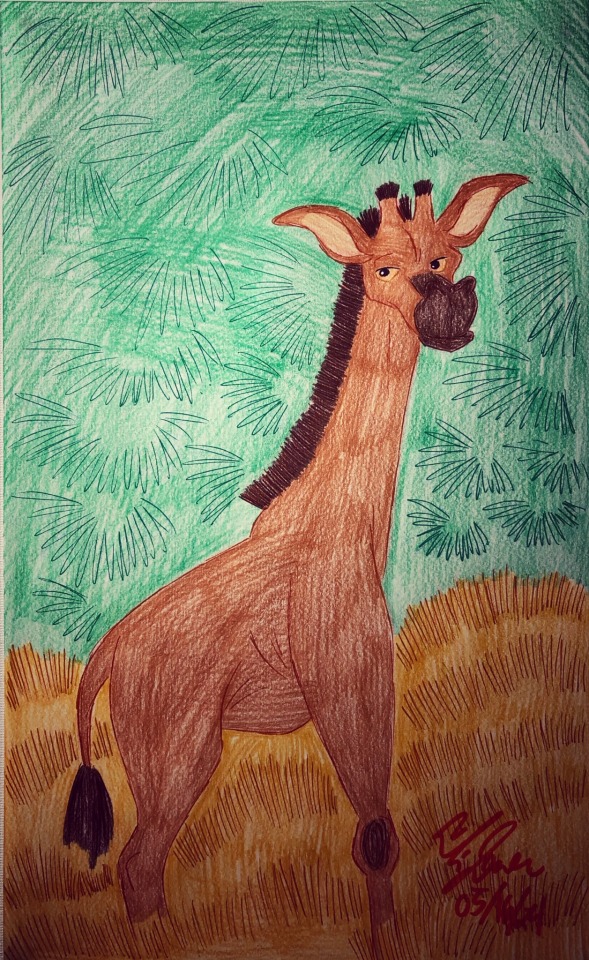
🦒 The spotless giraffe 🦒
https://brightszoo.com/rare-patternless-giraffe/
https://www.today.com/today/amp/rcna101041
#spotless giraffe#giraffe#baby giraffe#character design#animal study#zoo#zoo animals#rare animals#Giraffe Conservation Foundation#Brights Zoo#Washington County Tennessee#Zoological Association of America#Kipekee#Kipekee the Giraffe#rare giraffe
3 notes
·
View notes
Text

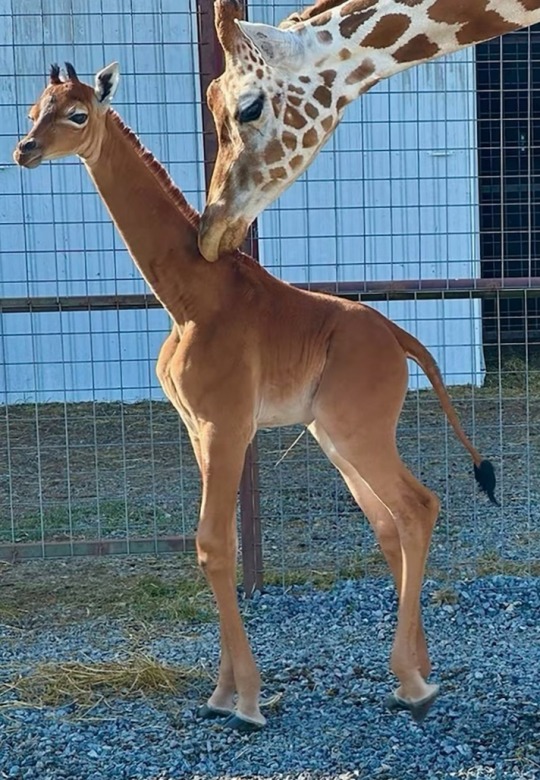
The spotless giraffe, born at a Tennessee zoo, is the first one seen in more than 50 years.
By Dina Fine Maron
24 August 2023
Just a few weeks old and still without a name, a newborn giraffe at a zoo in northeastern Tennessee could rightly be nicknamed “spotless.”
The female giraffe born without its characteristic spots instead boasts a solid brown coat, a phenomenon that hasn’t been observed in any giraffe for more than 50 years.
She was born last month at Brights Zoo, a family-owned facility in Limestone, Tennessee.
A spotless giraffe was last reported at a Tokyo zoo in 1972.
“The spotless giraffe calf is certainly an interesting case and that type of coloring has never been seen in the wild," says Sara Ferguson, a wildlife veterinarian and conservation health coordinator at the Giraffe Conservation Foundation.
The animal’s rare coloring is likely due to some sort of mutation in one or more genes, she says.
But there’s no indication of underlying medical issues or that the newborn reticulated giraffe — a subspecies native to eastern Africa — is at a genetic disadvantage.
David Bright, zoo director at the Brights Zoo, says that the baby’s nine-year-old mother, Shenna, had previously birthed three other calves and the trio were all spotted.
This latest addition to the zoo’s giraffe family was born at a weight of around 190 pounds, he says, and her veterinary care team concluded “she’s healthy and normal” — though her coloring was a surprise.
A case of spotlessness
Genetics often influence animal coloring in diverse ways.
Giraffes with all white coloring have previously been spotted in the wild, including two at a reserve in Kenya in 2017.
Those animals had a genetic condition called leucism, which blocks skin cells from producing pigments.
"There’s no known explanation for the spotless giraffe in Tennessee beyond that it’s almost certainly due to some kind of genetic mutation or mutations," says Fred Bercovitch, a wildlife conservation biologist at the Anne Innis Dagg Foundation, a nonprofit that focuses on giraffe conservation.
The last known case of a spotless giraffe was an animal named Toshiko born in 1972 at Ueno Zoo in Tokyo, Japan, CBS News reported.
That giraffe’s mother had birthed another spotless calf several years earlier, according to Bright.
The Brights Zoo, which is home to just over 700 animals of 126 different species, including nine giraffes, asked the public to vote on four potential names for the giraffe calf on its Facebook page.
It accrued over 17,000 votes in the first day, Bright says.
There are four candidate names, all in Swahili: Kipekee (unique), Firyali (extraordinary or unusual), Shakiri (she is most beautiful), and Jamelia (one of great beauty).
What’s in a spot?
A 2018 study published in the journal PeerJ found that certain aspects of giraffe spots are passed down from mother to calf, such as how round the spots are and their smoothness (which is technically referred to as “tortuousness”).
The study authors also noted that bigger, rounder spots seemed linked to higher survival rates for young giraffes.
Still unanswered, however, was if that was possibly due to better camouflage or other unknown factors like enhanced ability to regulate temperature.
Bercovitch, who wasn’t involved in that study, says he wouldn’t be concerned about the spotless giraffe’s health even if the giraffe was born in the wild and away from a zoo’s medical care.
“Among mammals, the fur and the hair are the primary features that assist in thermoregulation, not the color of the fur,” he says.
“Giraffes can regularly raise their body temperature by a few degrees … they don’t sweat,” he says.
“That’s one of the reasons you find giraffes under trees—they want to keep their body temperatures within certain limits.”
Even the lack of camouflage wouldn’t necessarily mean the giraffe would be at a disadvantage in the wild, he says, since the mortality rate for young giraffes from lion predation is already so high.
Ferguson, the wildlife veterinarian says she looks forward to hearing more about the giraffe in the years to come.
“What would be cool,” she says, “would be to take an infrared light photo or a thermograph of her to see if the spot pattern is still there but invisible to our eye.”

🤎🦒🤎
#giraffe#Brights Zoo#Sara Ferguson#Giraffe Conservation Foundation#reticulated giraffe#Shenna#leucism#spotless giraffe#Fred Bercovitch#David Bright#Anne Innis Dagg Foundation#Toshiko#Ueno Zoo#Tokyo#PeerJ#wildlife#animals#zoo#Nat Geo#National Geographic
6 notes
·
View notes
Text

A Spotless Giraffe, Pictured in Namibia 🇳🇦, was seen and photographed for the first time in the wild just weeks after another animal with this type of coloring was born at a U.S. 🇺🇸 Zoo. Photograph By Eckart Demasius and Giraffe Conservation Foundation
Another Rare Spotless Giraffe Found—the First Ever Seen in the Wild
The sighting occurred just weeks after the unusual condition was seen in a newborn giraffe at a Tennessee zoo. Is it more common than scientists thought?
— By Dina Fine Maron | September 12, 2023
Just weeks after a giraffe at a U.S. Zoo was born missing its characteristic spots, another spotless giraffe calf has now been seen and photographed in the wild for the first time.
The unprecedented sighting occurred at Mount Etjo Safari Lodge, a private game reserve in central Namibia. Tour guide Eckart Demasius saw and photographed the solid-brown calf during a game drive on the roughly 90,000-acre reserve, according to the Giraffe Conservation Foundation. Demasius, who was not immediately available for comment, shared his photos with the giraffe nonprofit.
Sara Ferguson, a wildlife veterinarian and conservation health coordinator at the foundation, says the two recent spotless sightings are pure coincidence and that there’s no data to suggest this coloring is occurring more frequently than it had in the past.
This finding is just another example of “the weird way the world works” she says, adding that she’s “so amazed and pleased there is so much more to learn and discover about giraffe.”
Genetic Anomalies
The spotless reticulated giraffe born at Brights Zoo in Limestone, Tennessee, earlier this summer was recently named Kipekee, which means “Unique” in Swahili. The recent wild sighting occurred in another giraffe subspecies found in southern Africa, the Angolan giraffe.
Before these recent births, a giraffe with all-brown coloring was last seen at a Tokyo Zoo in 1972.

The spotless giraffe and its mother were photographed on a reserve with around 800 giraffes in central Namibia 🇳🇦. Photograph By Eckart Demasius and Giraffe Conservation Foundation
Scientists, including Ferguson, believe the solid coloring is likely due to one or more genetic mutations that haven’t yet been identified.
Some aspects of giraffe spots are passed down from mother to calf, according to a 2018 study in the Journal Peer J, and larger, rounder spots appear to be linked to higher survival rates for younger giraffes, but the reasons for that remain unclear.
Derek Lee, a Biology Professor at Penn State University and a co-author on the PeerJ Study, says that technically these two recent examples are not spotless animals, but instead —"one-spot-all-over giraffes."
It’s impossible to say what this genetic anomaly means for the animal’s health, he says, but there’s no evidence the color difference puts the animal at a disadvantage.
���We have a sample size here of one, so time will tell what happens.”
#Spotless Giraffe 🦒#Dina Fine Maron#Mount Etjo Safari Lodge | Namibia 🇳🇦#Giraffe Conservation Foundation#Sara Ferguson#Genetic Anomalies#Brights Zoo | Limestone | Tennessee#Kipekee | Unique#Angolan Giraffe 🦒#Tokyo Zoo | Japan 🇯🇵#Journal Peer J.#Derek Lee | Biology Professor | Penn State University#Namibia 🇳🇦 | US 🇺🇸
4 notes
·
View notes
Text
Giraffes, in Steep Decline, Now Need Protection, U.S. Officials Say. (New York Times)
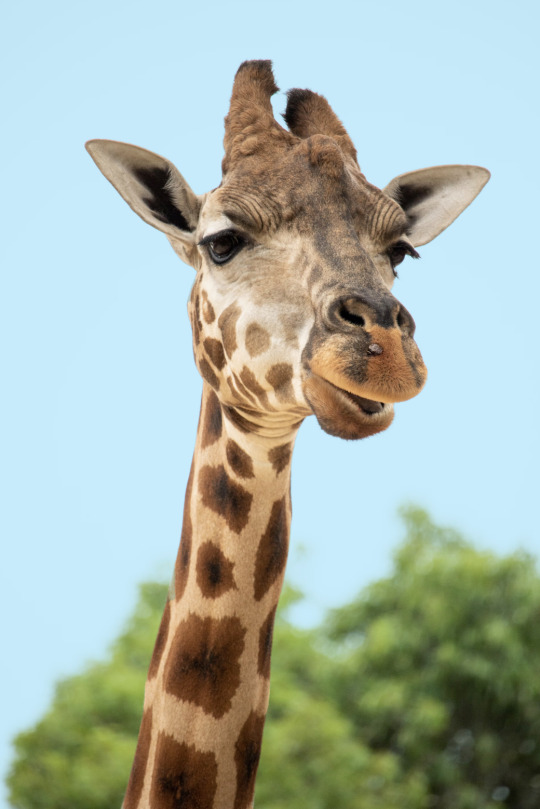
Excerpt from this New York Times story:
The tallest land animals in the world are declining so precipitously that they should be protected under the United States Endangered Species Act, federal wildlife officials said Wednesday.
While giraffes are found in Africa, the proposal would restrict the import of their parts into the United States and would increase conservation funding to help the animals survive.
In 2022, the last year for which international data was available, thousands of giraffe parts entered the United States: trophies, skins, feet, bones, bone carvings and leather pieces. Although trade is not the main reason for giraffes’ population losses, officials say it could add pressure on their numbers. The proposal would prohibit such imports without special permits.
“This action supports giraffe conservation while ensuring the United States does not contribute further to their decline,” Martha Williams, director of the U.S. Fish and Wildlife Service, said in a statement.
About 117,000 wild giraffes are left worldwide, according to the Giraffe Conservation Foundation, down almost 30 percent from the 1980s.
Northern giraffes have declined an estimated 77 percent since 1985, the wildlife service noted, to 5,919 animals from 25,653. The animals have vanished completely from numerous countries in West Africa.
It’s unclear what the election of Donald J. Trump would mean for the proposal, which will be open for public comment for 90 days and is supposed to be finalized within a year. It was during the last Trump administration that federal officials decided to consider listing giraffes as threatened or endangered, in response to a petition by advocacy groups.
The wildlife service attributed plummeting giraffe populations to habitat loss, as people take over land for urbanization and agriculture, poaching and the impacts of drought fueled by climate change. Without addressing these main drivers, conservationists say, little progress can be made.
Scientists do not entirely agree on the number of species and subspecies of giraffes. In its proposal, the agency recognized three subspecies of Northern giraffes, all of which it said should be listed as endangered. Two other varieties, reticulated and Masai giraffes, would be considered threatened, a less acute category. Two more subspecies, the Angolan and South African giraffe, were not found to be threatened but would be treated as such because they are so similar to the imperiled species that it would be all but impossible for law enforcement to tell them apart.
19 notes
·
View notes
Text

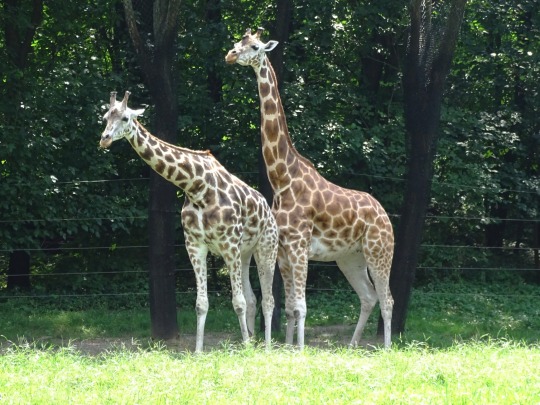
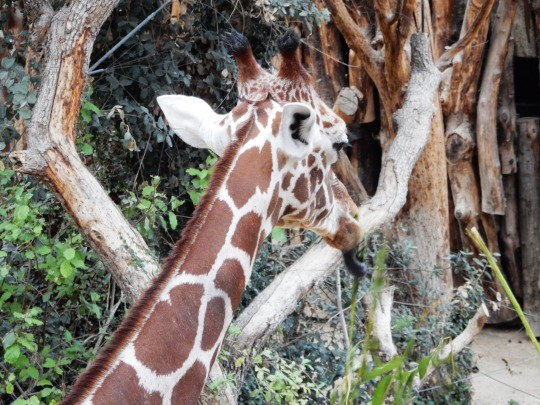
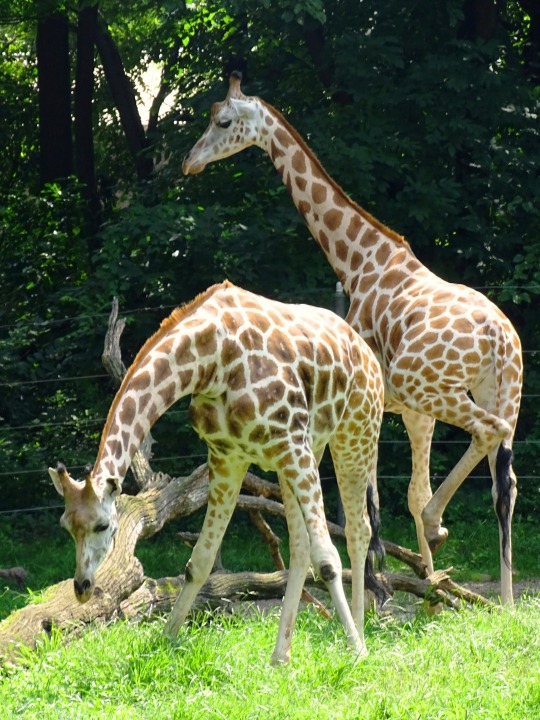

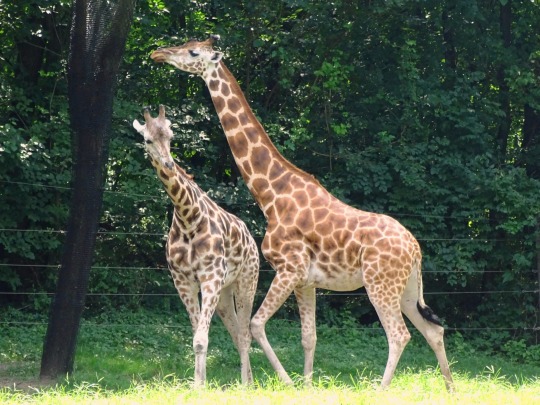
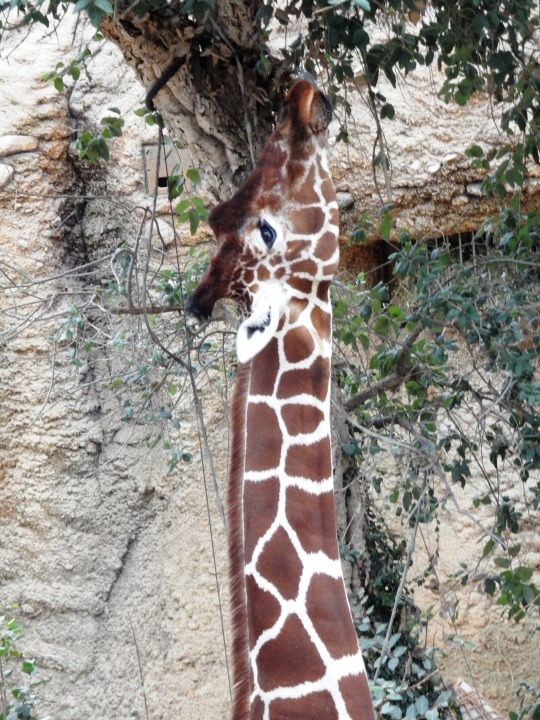
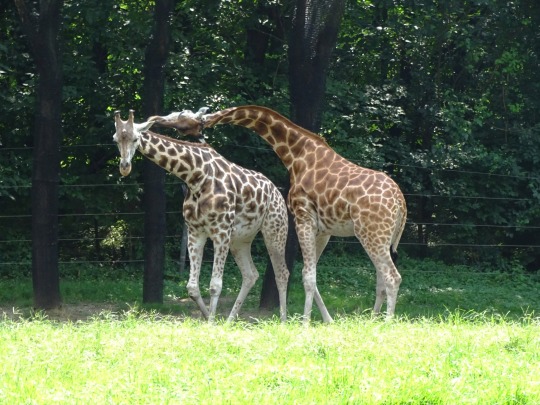
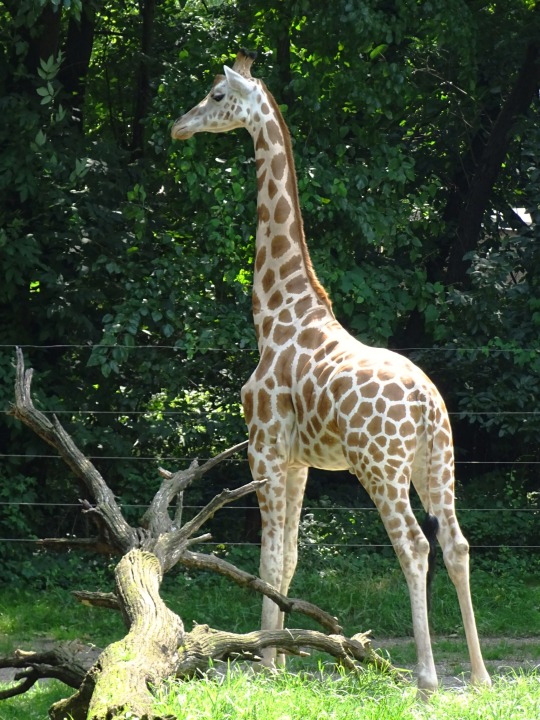

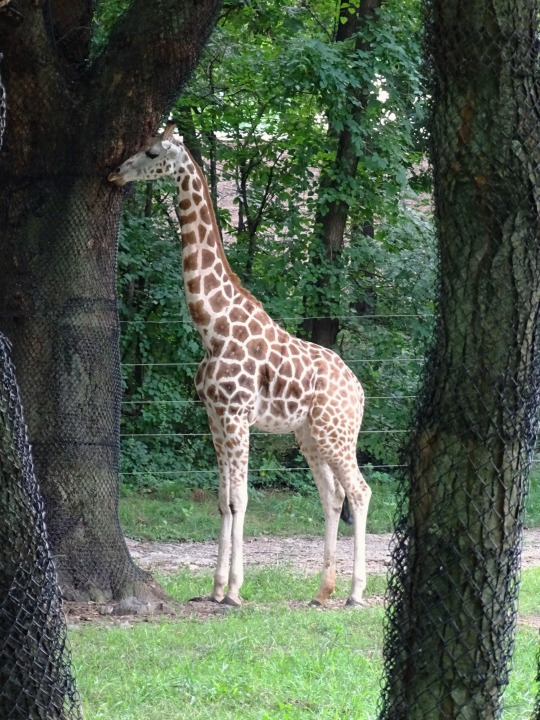

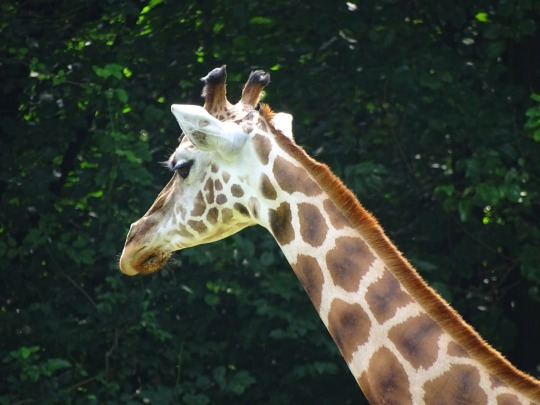
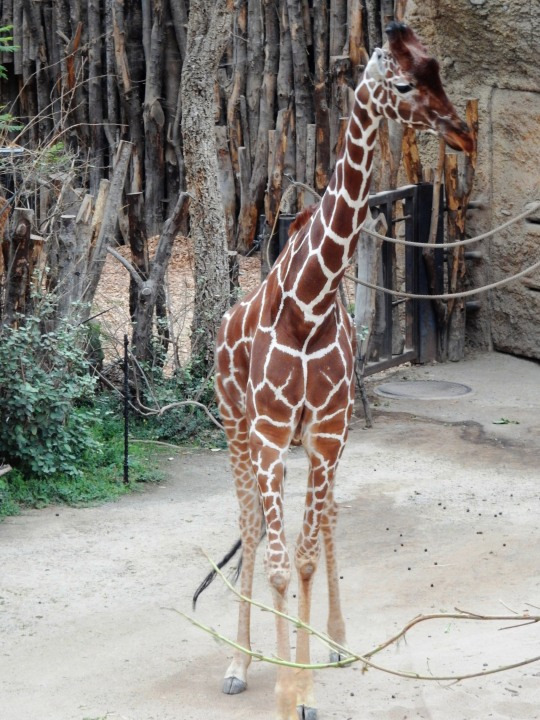

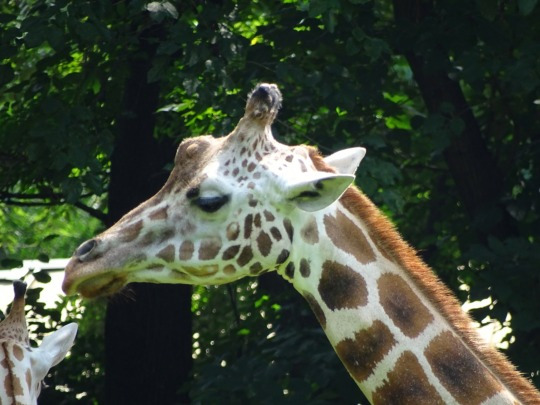
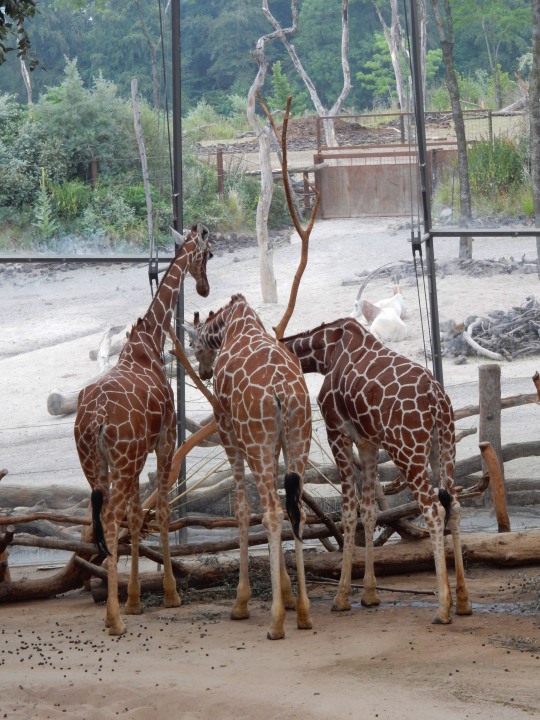


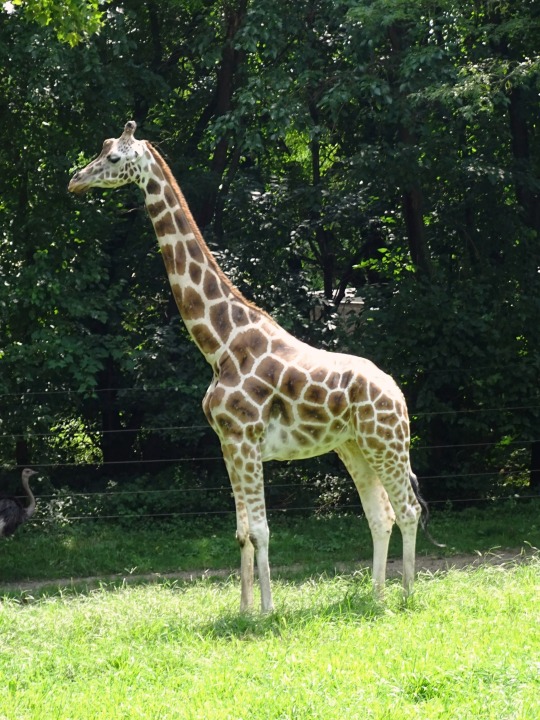




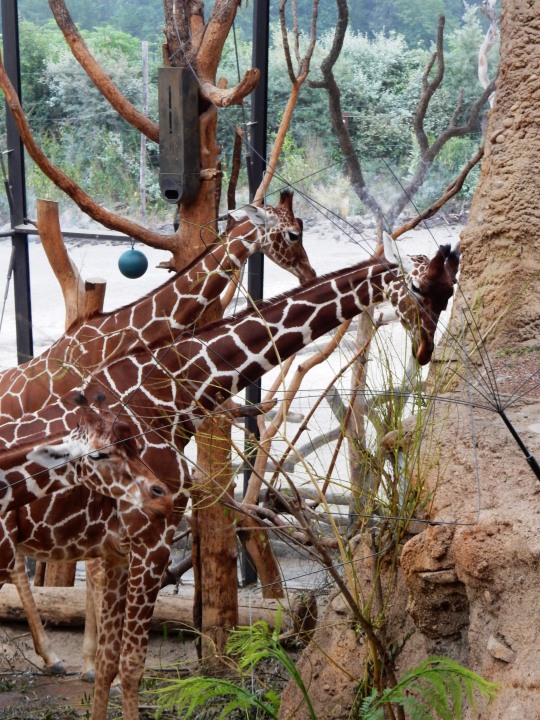
World Giraffe Day
Donate to help preserve the strange, long-necked majestic creatures known as giraffes. Visit a preserve, and see if you can meet one in person.
With their long, swaying necks, distinctive pattern on their furry coats and those endless spindly legs, giraffes are some very odd-looking creatures when you really think about it. But we love them – and that’s why they’ve got a day of their own!
Whether you’re into conserving their native habitats, enjoy hanging out with our necky friends at the zoo or you just appreciate the joy of nature’s most weird and wonderful creatures, World Giraffe Day is a day of observance when you can really put your neck out!
The History of World Giraffe Day
The conservation and protection of wild animals have long been on our agenda – beautiful creatures such as giraffes are at risk in their natural habitat due to a number of factors, including poaching and destruction of their ecosystems and habitats.
World Giraffe Day was initiated by the GCF – the Giraffe Conservation Foundation – and hopes to bring awareness of the amazing animal’s plight to every concerned person across the world while also celebrating these quirky creatures.
According to the GCF, there are only around 100,000 giraffes left in the wild, meaning they are approaching high-risk status.
In the IUCN Red List of Threatened Species, giraffes have recently had their listed status changed to ‘Vulnerable to extinction’ – their numbers in Africa have dropped hugely by around 40% in just the last three decades alone.
Specifically, the Masai giraffe has lost half of its numbers in the last 30 years, and now only around 32000 are remaining in Tanzania and in southern Kenya.
For the most part, these drops in the population are due to the increase of human settlements and the loss of habitat that goes along with it.
It would be a tragedy if giraffes were to go extinct in the wild. Not only are they a friendly species, but they’re also an inspiration. They’re unique in the animal kingdom, owing to their long necks, and colorful markings.
Interestingly, there are four separate species of giraffe in the world. There’s the Masai giraffe that lives on the border between Kenya and Tanzania. Then there’s the reticulated giraffe, the southern giraffe that lives in countries like Botswana and the northern giraffe, which dominates much of the north of Africa. The giraffe, as you might guess, is the tallest animal in the world. And no two individuals have the same spots. Every giraffe is different, just like how two people never have the same fingerprints.
Unfortunately, giraffes are officially extinct in more than seven African countries, highlighting the need to protect them.
The GCF now has dozens of partners all over the world, committed to helping to preserve this majestic beast. Parks in western countries regularly organize activities and games to celebrate the day, including face-painting in the style of giraffe spots! Many zoos also provide visitors with the opportunity to meet expert giraffe keepers and learn more about how they live, both in captivity and the wild.
There’s a desperate need for an event like World Giraffe Day. These creatures, like elephants, lions, and hippos, are an inspiration for children all around the world and a leading driver of conservation efforts. It is almost impossible to imagine an Africa where these giant beasts don’t roam the savannah.
How to celebrate World Giraffe Day
The GCF website has plenty of information for you if you wish to donate to the effort of saving the world’s giraffe population, and you should certainly take a look if you are fond of the long-necked creatures.
Even small donations count towards helping, and just a little money can go towards helping to ensure the future safety of the Masai giraffe.
Many zoos across your country will be taking part in fundraising and observance of this day – so if you want to get involved, you could pop along and play your part. There are also opportunities to get involved via schools, NGOs, government institutions and conservation organizations too. Most of the work on the day itself will be to raise awareness of the plight of the giraffe and to engage the community on the issue. The giraffe needs people on the ground who understand the issues and are able to have an impact on the wider community.
Besides attending an event and donating money, what else can you do to celebrate World Giraffe Day? If you’re an artist, then you could try painting an image that captures the essence of these beasts. You can convey their giant, striding nature on canvas and then perhaps share your work on social media.
If you’re a writer, you could also pen an article on the dangers that giraffes face and the things that individuals can do to support the species for posterity. While the vast majority of your audience will care about the plight of these animals, they won’t necessarily know what steps they can take to make a difference. Giraffes are often thousands of miles away in other countries.
Your task, therefore, might be to create a resource that people can use to take action to protect giraffes. Alternatively, you could create a journalistic piece, chronicling current issues facing the species.
Be sure to share information about giraffe conservation on your social networking accounts, and get the conversation started about keeping these beautiful animals a part of our wildlife.
GCF began celebrating World Giraffe Day as a way to raise awareness. The best thing you can do, therefore, is to help them in their effort and protect this marvelous species.
Source
#Reticulated giraffe#Zoo Zürich#Zurich#Switzerland#Bronx Zoo#my favorite zoo#New York City#USA#outdoors#summer 2018#travel#original photography#vacation#tourist attraction#landmark#cityscape#nature#flora#fauna#World Giraffe Day#WorldGiraffeDay#21 June#architecture
3 notes
·
View notes
Text
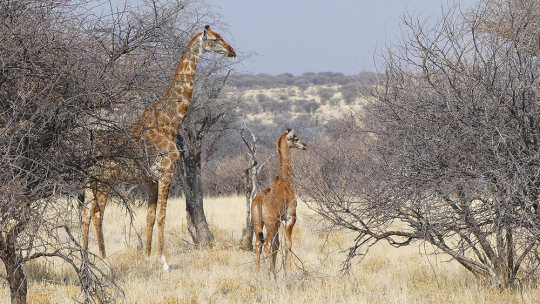
A spotless giraffe, pictured in Namibia, was seen and photographed for the first time in the wild just weeks after another animal with this type of coloring was born at a U.S. zoo.
PHOTOGRAPH BY ECKART DEMASIUS AND GIRAFFE CONSERVATION FOUNDATION
#eckart demasius#photographer#national geographic#spotless giraffe#giraffe#animal#mammal#wildlife#nature#namibia
23 notes
·
View notes
Text
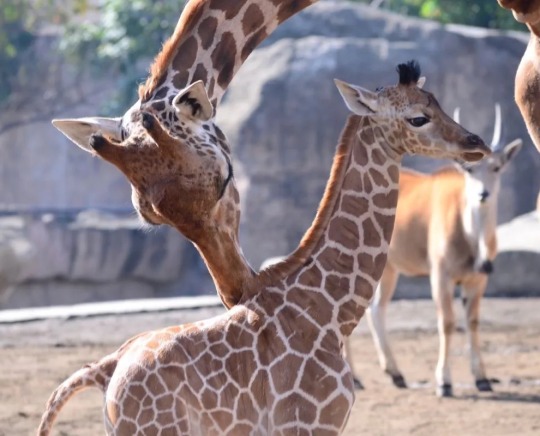
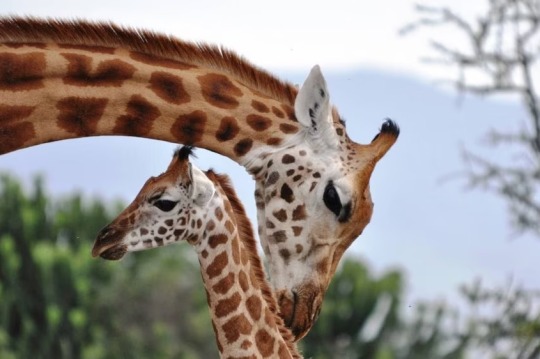
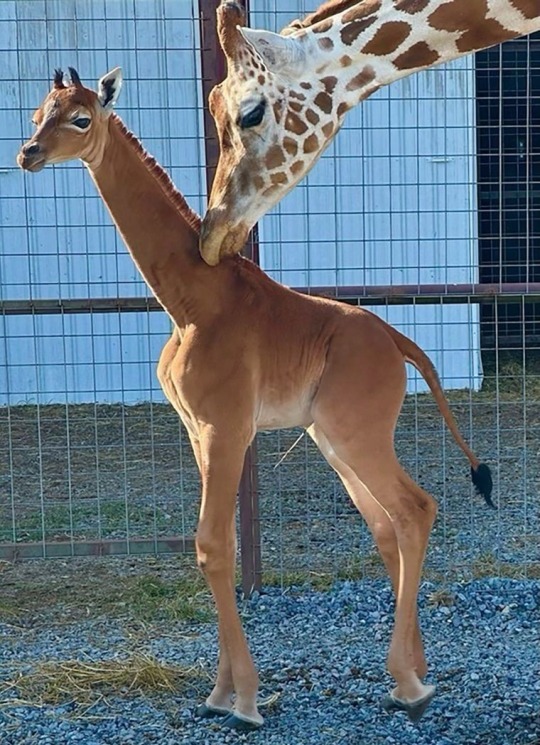
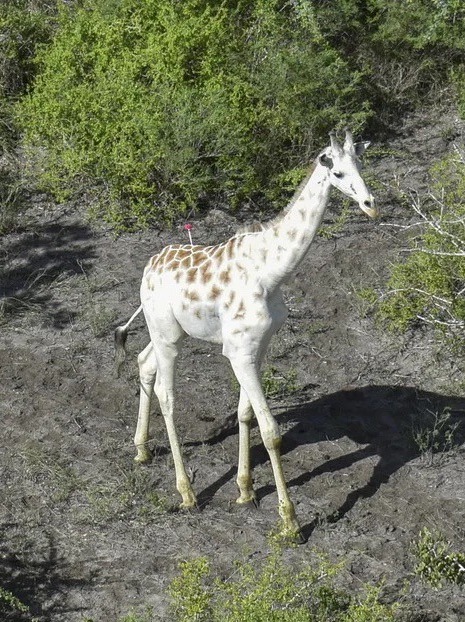
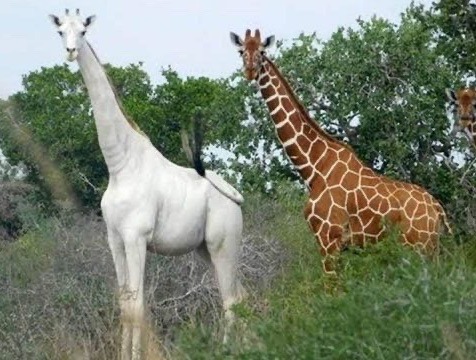
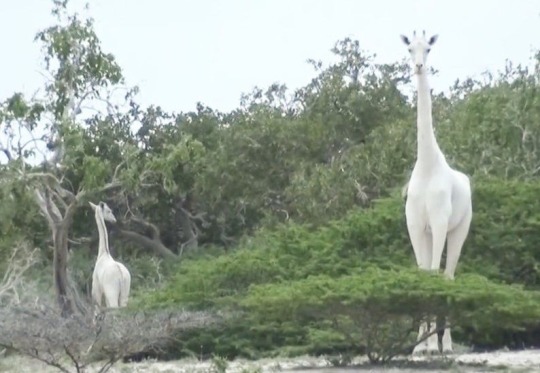
hi girlies! just wanted to share my hyperfixation of the week: giraffes
the other day i remembered giraffes actually exist and i love them so much!! they’re so cute and look so calm i love to admire them with their big eyes with long lashes
i also found out that there exist a rare spotless giraffe in Tennessee and three rare white/albino giraffes only in Kenya and Tanzania, as you can see in the pictures. Sadly, the two kenyan white giraffes got killed by furtive hunters/poachers so there’s only one known white giraffe left in the world nowadays
#giraffe#giraffes#animals#animal conservation#kenya#tanzania#tennessee#white giraffe#stop animal cruelty#stop animal abuse#stop animal hunting#nature preserve
2 notes
·
View notes
Text
Embracing Nature's Embrace
Hi Everyone and welcome to my blog posts! I’m so excited to get started and read what you guys have to say as well!
In the chaos of our daily lives, finding comfort in nature often becomes a sanctuary for the soul. For me, this connection with the natural world has been a constant source of calmness, evolving and deepening over the years. My journey to appreciate and cherish the beauty of nature has been a gradual process, with pivotal moments that have shaped my current relationship with the environment.
Since I was little, nature has been a magnetic force in my life. I clearly remember exploring the trails near my house, captivated by the greenery, vibrant flowers, and the sound of all the animals. It was in those moments that I discovered the calming effect nature had on me, providing a pause from the chaos of the outside world. These early encounters with the natural world laid the foundation for my lifelong relationship with it.
As life became increasingly hectic, my backyard provided me with a "sense of place." During hard days, I found comfort in the simple act of sitting among the plants and animals who lived there. The tall trees and small bushes offered me shade and shelter. The ambient sounds of chirping birds and rustling leaves created a peaceful background noise for moments of reflection and relaxation. It was here that I developed a profound sense of connection with the environment around me.
However, it was a recent journey to Africa that marked a transformative chapter in my relationship with nature. Observing animals in their natural environment was a revelation that deepened my appreciation for the interconnectedness of all living things. Witnessing elephants gracefully roaming, lions stalking their prey, and giraffes leisurely grazing against the backdrop. This firsthand experience allowed me to understand the importance of preserving these ecosystems and the delicate relationships that sustain them.
The African adventure not only enriched my understanding of nature but also instilled a profound sense of responsibility toward its conservation. It ignited a passion for environmental stewardship, compelling me to reflect on my own impact on the planet.
As time goes by my relationship with nature is constantly evolving creating a deeper appreciation and connection to the natural world! I will attach some cute photos of the animals in Africa for you guys to see! Feel free to share your thoughts and experiences!


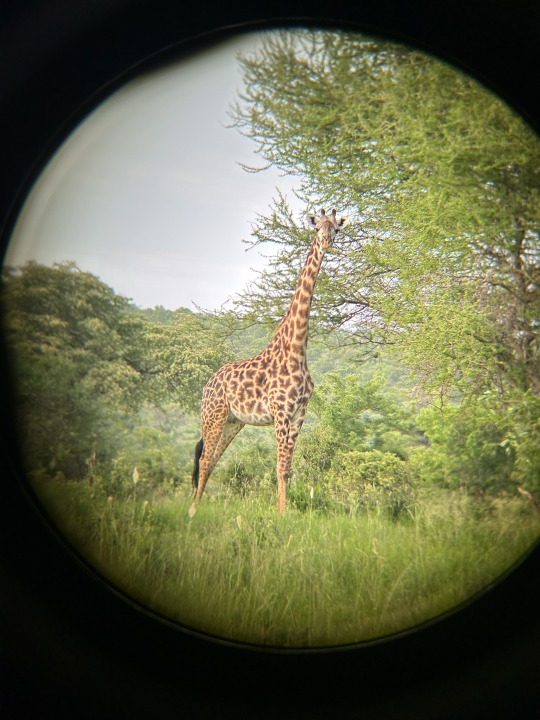
2 notes
·
View notes
Text
Wild Animals Found In Tanzania
Did you know that Tanzania has the largest wild animal population density in the world? This means that there are more animals per square mile of land in Tanzania than anywhere else. How interesting is that!
According to Tanzania National Parks Authority (TANAPA), the country has 22 National Parks home to more than 430 mammalians, 6,000 insects, 1,112 birds, and 100 snakes species.
So, hop on to this exciting ride as we’ll be sharing some amazing facts of different animals that are found in the beautiful country of Tanzania.
Today we’ll have a look at the Tanzanian’s National Animal and that is none other than the majestic Giraffe. According to the Giraffe Conservation Foundation (GCF), there are four distinct species of giraffes and those are the Maasai giraffe (G. tippelskirchi), Northern giraffe (G. camelopardalis), Reticulated giraffe (G. reticulata) and Southern giraffe (G. giraffa). Tanzania is home to the largest population of Maasai giraffes in the world.

Facts About Giraffe
An average giraffe is 20 feet tall, making them the tallest land mammal on earth
Both male and female giraffes have ossified cartilage resembling horns on the top of their heads
They are social animals. They travel in groups of 10 to 12 known as tower
Both male and female giraffes can live to about 25 years in the wild and even longer in captivity. Their mortality rates vary from region to region depending on the density of their natural predators
Their biggest natural predators are lions who are responsible for the mortality of more than 50% of giraffe calves in their first year
They are herbivorous animals and due to their height they eat leaves and buds from trees and shrubs. They can consume approximately 35 kilograms of food a day
Their bodies are covered in spots (patches) which they use as camouflage from their predators
Giraffes’ gestation period is about 15 months. They can carry only one calf at each pregnancy, and they give birth to their calves while standing up
They can run as fast as 35 mph over short distances and about 10 mph over longer distances.
Come visit the beautiful country of Tanzania where you can see these majestic animals. Stay tuned for next time when we come back with other amazing facts about other animals found in Tanzania.
This article was written by Duteni Tours, a Class A licensed Tour Operator based in Tanzania, East Africa. For questions about the content of the article or for information about magical safaris or immersive cultural experiences in Tanzania, please contact us at;
[email protected] OR +255 765 809 691
3 notes
·
View notes
Text
They documented a second recently, too, but in the wild! Just by a lodge in Namibia:
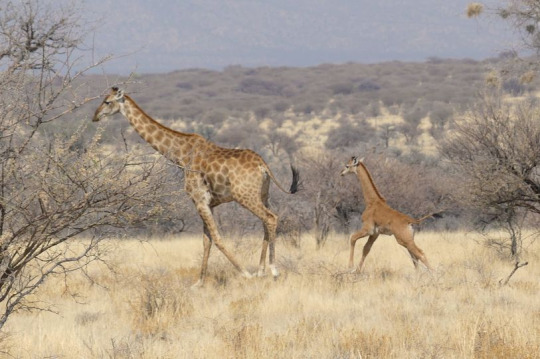
photo source: Giraffe Conservation Foundation, photographed by Eckart Demasius
ETA: Pigment in domestic animals is linked to a whole lot of other body processes, but all the research I know of is for dilution or lack of pigment. I don't know about giraffe coloration either.
New weird horse just dropped, folks.
A spotless giraffe was recently born at Bright’s Zoo in Limestone, TN and was just announced in the media this morning. They’re starting a public naming contest for her, of course.



I’d love to know what type of mutation causes this lack of of pattern, but I don’t know if we have genetics on that for giraffes the way we do other species. As far as is known, she’s the first spotless giraffe ever documented!
86K notes
·
View notes
Text

(CNN) — Fresh warthog carcass in tow, a poacher speeds away from Zimbabwe’s Imire Rhino and Wildlife Conservancy.
Blood spatters, footprints and tire marks are the only traces of the crime he has just committed, but a trace is all it takes for the hunter to become the hunted.
His arrest comes a short while later, courtesy of Shinga, a Belgian Malinois that perfectly retraced the poacher’s 2.8-mile (4.5-kilometer) route home, leading an anti-poaching team to his door.
Last October’s pursuit ultimately began much further afield, in the sleepy Welsh town of Carmarthen, where Shinga was born and raised.
It’s home to the kennels of Dogs4Wildlife, a non-profit organization that trains dogs to support anti-poaching units (APUs) in their efforts to protect endangered wildlife across southern Africa.
It’s run by professional dog trainers Darren Priddle and Jacqui Law, who decided to blend their career experiences of developing working dogs for police, security, and military operations with their love of wildlife, after seeing photos of a poached African rhino on social media in 2015.
“It was quite a horrific image. We sat down and we said, ‘Okay, that’s really affected us,’” Priddle told CNN.
“We can deploy dogs in the UK to track people … to look for drugs, firearms and explosives, so why could we not look at developing the dogs that we were training for conservation efforts?”

Puppy love
The duo has since sent 15 dogs to five sub-Saharan African countries, including Mozambique and Tanzania, each one bred by them in southwest Wales.
They usually breed one or two litters each year.
Dutch shepherds and Belgian Malinois are two of the most common breeds for tracking, while labradors and spaniels are typically the detection (sniffer) dogs of choice.
Training begins from as early as two days old.
Priddle acknowledges that sounds young, but he believes early imprinting programs can provide a strong foundation for the formal training that commences around six weeks later.
“There’s a lot of scientific study out there that’s been documented on exposing puppies to touch, different temperatures, different surfaces and textures, as well as different odors that we put into the whelping box when they’re very young,” he explained
“It just helps their brain and (helps) their synapses to fire. We see a lot of advancement in those puppies.”
The curriculum closely follows that of the typical police or security dog, focusing on obedience, tracking, and scent detection — a skill used to sniff out rhino horn, elephant ivory and bushmeat.

The only key difference to the training process is acclimating dogs to the sights, sounds and smells of lions, giraffes and the myriad other species they will help protect.
With rhino and elephant numbers severely lacking in the wetlands of Carmarthenshire, trips to local zoos are organized to desensitize the puppies to African wildlife.
Typically, after 16 to 18 months, dogs are ready for assignment.
Even though Priddle accompanies each one on the long flight to their new home, spending the first month with the anti-poaching unit to provide field and animal welfare training to rangers, goodbyes never get easier.
“The transition from spending every waking moment with that dog, having a very strong relationship, to then letting that go is challenging and difficult,” Law said.
“But as much as it breaks my heart when they go, I know they’re going for the greater good.”
Biting back
Easing the pain are WhatsApp group chats set up for Priddle and Law to keep in touch with and advise APUs across the various reserves and conservancies.
They are particularly active forums, especially given that the organization also provides training and consultancy to teams with existing dog units, such as the Akashinga Rangers, Africa’s first armed all-female anti-poaching squad, who watch over Zimbabwe’s vast Phundundu Wildlife Area.
Naturally, updates of success are a source of immense personal pride for the pair back in Wales.
Shinga’s tracking triumph in October followed the achievements of fellow Belgian Malinois Dan, which alerted his team to a rhino calf that had been caught in a snare trap in KwaZulu-Natal Province, South Africa in 2013
Such victories demonstrate the “game-changing” value such dogs can have when incorporated into conservation efforts, argue the duo, even through their mere presence.
“When these reserves bring a specialist dog onto a wildlife reserve … the word spreads very quickly that the APUs now have the capability to actually catch these poachers on a more efficient and successful basis,” Priddle said.
“Some of the smaller wildlife reserves almost eradicate poaching in all types completely, just because of the deterrent value that dog brings to the party.”

As park manager and head of anti-poaching operations at Zimbabwe’s 10,000-acre Imire conservancy, Reilly Travers has had a front row seat for the last seven years to the impact of Shinga and also Murwi, a Dutch shepherd whose training was paid for by the fundraising efforts of pupils of the local Harare International school.
Capable of covering as much as 10 kilometers (6.2 miles) an hour when tracking, even in darkness, dogs allow rangers to “own the night,” Travers explained, adding an invaluable level of versatility and unpredictability to their arsenal.
And on numerous occasions, Shinga and Murwi have alerted units to potentially mortal threats – be it from poachers or predators – through body language alone.
“They’ve saved our guys on the ground on several occasions and they’ve been responsible for apprehending quite a few poachers,” Travers told CNN.
“It’s had a massive impact on security for Imire. We’ve had a drastic reduction in poaching and the K9 unit has a massive role to play in that … It’s not the silver bullet but it’s a tool that will make a significant difference.”

‘We learn in nature’
Zimbabwe once boasted thousands of rhinos, yet numbers nosedived to less than 450 by 1992 because of poaching networks, according to conservation charity Save the Rhino.
The efforts of Imire, which saw the birth of its 23rd rhino in 2023, helped the country’s rhino population climb back over the 1,000-mark in 2022.
But statistics continue to make for grim reading across the wider continent.
Though the numbers of African rhinos poached annually has dropped steadily since a peak of over 1,300 in 2015, almost 600 kills were still recorded last year, according to Save the Rhino.
It contributed to an overall decline in the total African black rhino population in 2023, though white rhino numbers are on the rise.
And the impact of each loss extends far beyond statistics, Priddle and Law explain, especially at the smaller reserves that Dogs4Wildlife focuses on, which have markedly less anti-poaching resources than the continent’s most renowned parks.
Recalling the sight of a de-horned 25-year-old bull rhino and eight-year-old male in Limpopo, both killed by a single poacher, Law stressed the knock-on effect on the wider environment.
“The vegetation they clear, the seeds they disperse, all the other animals that are impacted. You think it’s just a rhino that’s gone – it’s the whole ecosystem that suffers,” Law explained.
“The owners of that reserve had a relationship with that bull for 25 years – we grieve when we lose a dog after 10 to 15 years.
For us to experience the impact that losing those two rhinos had on the reserve owner sort of gave us added motivation.
It was just horrific. I never want to see that again.”
As Dogs4Wildlife looks ahead to its long-term goal of one day opening a specialized training and canine school within Africa, mobilizing future generations has become a key part of its overall mission.
Its Conservation club, called Siyafunda Ngemvelo – which translates to “we learn in nature” in IsiZulu – has taken more than 180 South African children into reserves as part of a wildlife education program.
Law said that for local people to want to protect rhinos, they must first see the animals’ value to the environment.
“We have to start at the fundamental basics, which is children taking responsibility for their own wildlife,” she added.
“Once they get the passion for it, they’re going to become future rangers, not future poachers.”

#Imire Rhino and Wildlife Conservancy#Zimbabwe#Belgian Malinois#anti-poaching#Carmarthen#Dogs4Wildlife#anti-poaching units#professional dog trainers#Shinga#welsh puppies#Dutch shepherds#labradors#spaniels#early imprinting programs#Akashinga Rangers#Phundundu Wildlife Area#Dan#Save the Rhino#African rhinos#Siyafunda Ngemvelo#wildlife education program#save wildlife#conservation#protection#wildlife rangers#wildlife#rhinoceros#rhino#ecosystem
4 notes
·
View notes
Text
Extremely Rare Spotless Giraffe Born in U.S. Zoo! This Phenomenon Has Never Been Observed in the Wild, a Sign of its Scarcity.
— By Dina Fine Maron | August 23, 2023

A reticulated Giraffe was born without spots at Brights Zoo in Northeastern Tennessee at the end of July. The Zoo is asking the public to cast their vote on what to name her. Tony Bright/Brights Zoo via AP. The spotless giraffe is the first one seen in more than 50 years.
Just a few weeks old and still without a name, a newborn giraffe at a zoo in northeastern Tennessee could rightly be nicknamed “spotless.”
The female giraffe born without its characteristic spots instead boasts a solid brown coat, a phenomenon that hasn’t been observed in any giraffe for more than 50 years. She was born last month at Brights Zoo, a family-owned facility in Limestone, Tennessee. A spotless giraffe was last reported at a Tokyo zoo in 1972.
“The spotless giraffe calf is certainly an interesting case,” and that type of coloring has never been seen in the wild, says Sara Ferguson, a wildlife veterinarian and conservation health coordinator at the Giraffe Conservation Foundation.
The animal’s rare coloring is likely due to some sort of mutation in one or more genes, she says. But there’s no indication of underlying medical issues or that the newborn reticulated giraffe—a subspecies native to eastern Africa—is at a genetic disadvantage.
David Bright, zoo director at the Brights Zoo, says that the baby’s nine-year-old mother, Shenna, had previously birthed three other calves and the trio were all spotted. This latest addition to the zoo’s giraffe family was born at a weight of around 190 pounds, he says, and her veterinary care team concluded “she’s healthy and normal”—though her coloring was a surprise.
A Case of Spotlessness
Genetics often influence animal coloring in diverse ways. Giraffes with all white coloring have previously been spotted in the wild, including two at a reserve in Kenya in 2017. Those animals had a genetic condition called leucism, which blocks skin cells from producing pigments.
There’s no known explanation for the spotless giraffe in Tennessee beyond that it’s almost certainly due to some kind of genetic mutation or mutations, says Fred Bercovitch, a wildlife conservation biologist at the Anne Innis Dagg Foundation, a nonprofit that focuses on giraffe conservation.
The last known case of a spotless giraffe was an animal named Toshiko born in 1972 at Ueno Zoo in Tokyo, Japan, CBS News reported. That giraffe’s mother had birthed another spotless calf several years earlier, according to Bright.
The Brights Zoo, which is home to just over 700 animals of 126 different species, including nine giraffes, asked the public to vote on four potential names for the giraffe calf on its Facebook page, and it accrued over 17,000 votes in the first day, Bright says. There are four candidate names, all in Swahili: Kipekee (unique), Firyali (extraordinary or unusual), Shakiri (she is most beautiful), and Jamelia (one of great beauty).
What’s in a Spot?
A 2018 study published in the journal PeerJ found that certain aspects of giraffe spots are passed down from mother to calf, such as how round the spots are and their smoothness (which is technically referred to as “tortuousness”). The study authors also noted that bigger, rounder spots seemed linked to higher survival rates for young giraffes. Still unanswered, however, was if that was possibly due to better camouflage or other unknown factors like enhanced ability to regulate temperature.
Bercovitch, who wasn’t involved in that study, says he wouldn’t be concerned about the spotless giraffe’s health even if the giraffe was born in the wild and away from a zoo’s medical care.
“Among mammals the fur and the hair are the primary features that assist in thermoregulation, not the color of the fur,” he says. “Giraffes can regularly raise their body temperature by a few degrees … they don’t sweat,” he says. “That’s one of the reasons you find giraffes under trees—they want to keep their body temperatures within certain limits.”
Even the lack of camouflage wouldn’t necessarily mean the giraffe would be at a disadvantage in the wild, he says, since the mortality rate for young giraffes from lion predation is already so high.
Ferguson, the wildlife veterinarian says she looks forward to hearing more about the giraffe in the years to come. “What would be cool,” she says, “would be to take an infrared light photo or a thermograph of her to see if the spot pattern is still there but invisible to our eye.”
#Spotless Giraffe 🦒#Brights Zoo | Limestone | Nothern Tennessee#Sara Ferguson | Wildlife Veterinarian | Conservation Health Coordinator#Conservation Foundation#Fred Bercovitch#Anne Innis Dagg Foundation#Toshiko | Born 1972 | Ueno Zoo | Tokyo | Japan 🇯🇵#Journal PeerJ#Tortuousness#Camouflage#Young Giraffe 🦒#Lion 🦁 Predation
0 notes
Text
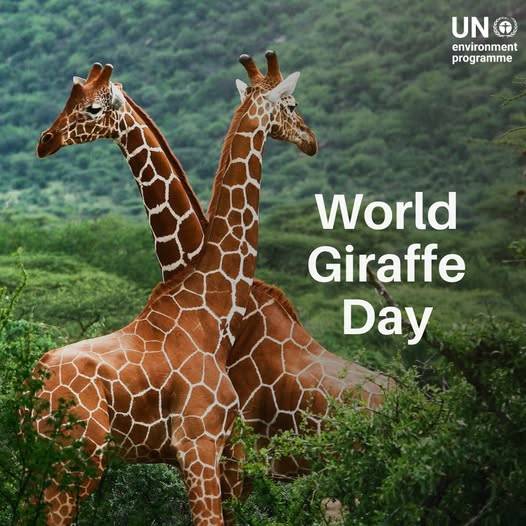
World Giraffe Day is June 21, and the Giraffe Conservation Foundation released its 2025 State of Giraffe report ahead of the celebration. The report points to better data collection and conservation efforts for an increase in the population in some giraffe species.
0 notes
Text
Another spotless giraffe has been discovered — this time, on a reserve in Namibia
September 12, 202312:39 PM ET A baby reticulated giraffe at a Tennessee zoo made international headlines last month when word got out that she was born without her spots. It was thought to be the only living giraffe in the world to hold the title — that is, until a wild spotless giraffe was, well, spotted at a reserve in Africa. The Giraffe Conservation Foundation announced in a Monday news release that the spotless giraffe was found roaming around the Mount Etjo Safari Lodge, a private game reserve in Namibia. The foundation says the Angolan giraffe is the first ever spotless giraffe found in the wild. "Before the discovery of the Namibian spotless Angolan giraffe, there were only two records of such [a] brown giraffe, both in zoos in Japan in 1972 and most recently in the USA," the news release says.
Baby giraffe in Tennessee... no spots! Might be the only one on Earth.
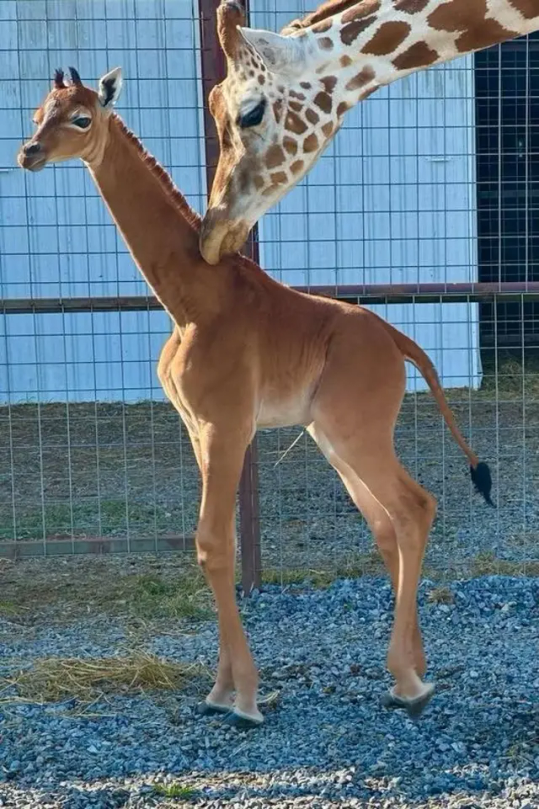
(Source)
3K notes
·
View notes
Text
Manyara Ranch: African Wildlife Foundation
Good story from the African Wildlife Federation. Tap/click on the caption to get to the PDF version of the report.

Excerpt:
A long time ago, the people of Tanzania and their livestock adopted to living alongside wildlife. For millennia, the Maasai have tracked the movements of wildebeests to identify good grazing; the favorite hideouts of lions to avoid attacks on cattle; and the presence of oxpeckers to know if dangerous buffalo are nearby.
In the past 60 years, however, drastic changes have come to the Maasai Steppe, a large semi-arid grassland ecosystem in north-central Tanzania. Large-scale farms, the expansion of safari tourism, the creation of national parks, and restricted access to once communally used land have squeezed the rangeland available to livestock. With more cattle on less land, grasslands are becoming overgrazed. The spread of human settlements and agriculture have blocked age-old wildlife migration routes, leading to more frequent—and sometimes deadly—confrontations between people and animals. And climate change, which has intensified droughts and upended rainfall patterns, is escalating competition for green grass and fresh water, pushing even more pastoralists to agriculture.
Anchoring the Maasai Steppe are Tarangire and Lake Manyara National Parks, where the shores of the eponymous river and lake abound with wildlife in the dry season. The steppe is home to some of the world’s most abundant and diverse wildlife, including one of the largest—and growing– populations of elephants in Africa (recovering from heavy poaching in the 1970s and 1980s) and the only stronghold of the eastern white-bearded wildebeests. The ability to move between the parks and beyond them into the plains is crucial for the survival of many of the ecosystem’s most iconic species, including elephants and wildebeests. But safe, unimpeded pathways are becoming scarce. In between the two parks, in the all-important Kwakuchinja wildlife corridor, sits a patchwork of villages, farms, large herds of livestock, grasslands—and Manyara Ranch.
Since 2001, the African Wildlife Foundation (AWF) has championed a unique conservation model for the ranch, starting with negotiations with the government to form a land conservation trust to make the ranch a conservation space. Beginning in 2013, we took over direct management of the ranch, balancing the working cattle ranch with habitat restoration and wildlife conservation—a new model for Tanzania.While Tanzania’s pastoralists generally are prohibited from bringing livestock into national parks, cattle are a nonnegotiable part of the region’s economy and culture. Therefore, successful conservation of land outside formal protected areas depends on the sustainable coexistence of livestock and wildlife, particularly along migration routes where wildlife move outside of the boundaries of the parks. Manyara Ranch is a vital link along one of those migration routes. It helps connect the national parks to each other and to the wet-season grazing grounds of the Northern Plains, described as the “last, best remaining breeding ground” for the ecosystem’s migrating wildebeest, zebras, gazelles, and others. In addition to the migrating animals that seasonally pass through, the ranch today is home to resident giraffes, lions, and many other iconic African species—as well as more than a thousand cattle.
The lease to the land is now held by the Monduli District Council, and the day-to-day running of the ranch is managed by the Manyara Ranch Management Trust, composed of representatives from the Monduli council, two local villages, the Tanzania Wildlife Management Authority, and AWF.
“The vision for a project like this is to bring management expertise to the local stakeholders. We want to think inclusively and really focus on creating local partnership in decision-making regarding operations,” said Pastor Magingi, AWF’s Tanzania Country Coordinator.


3 notes
·
View notes